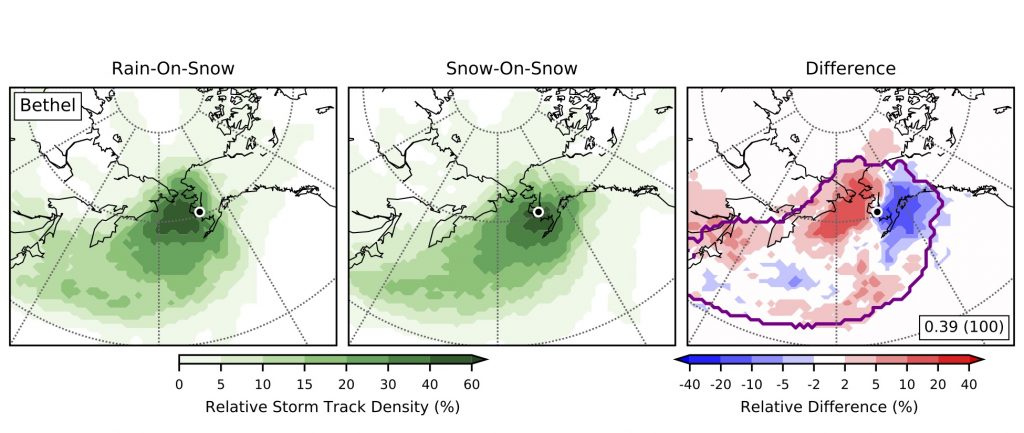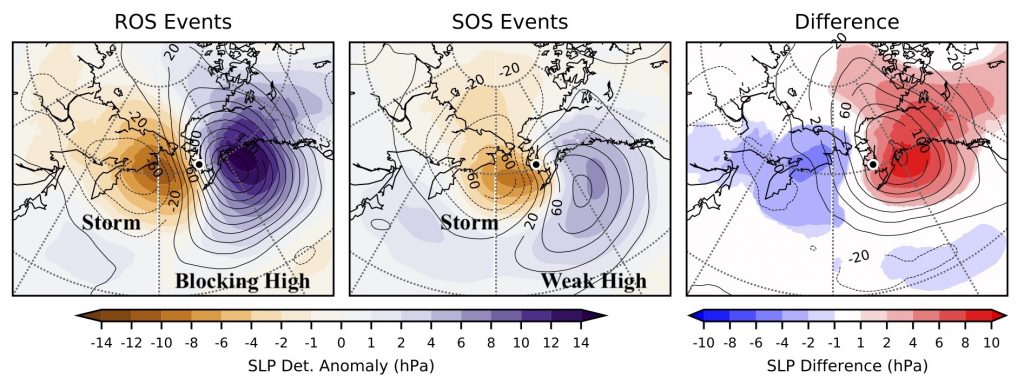I was part of a team led by Momme Hell at Scripps Institution for Oceanography that recently published an article in the Journal of Geophysical Research Oceans entitled: “Estimating Southern Ocean Storm Positions With Seismic Observations”. Momme is an expert in detecting seismic waves. We often hear about seismic waves in relation to earthquakes, but on an ice shelf (which is floating on the ocean), the surface also moves up and down with ocean waves.
The reason why Momme brought me on this project was because: 1) storm events are an important generation mechanism for these waves, and 2) I developed an algorithm for detecting and tracking storms from atmospheric data (i.e., atmospheric reanalyses). We wanted to know how well the storms detected from the atmospheric renalsyses aligned with the seismic observations that Momme makes.

The tracks of 2827 storms used in this study. These are on the Pacific-side of Antarctica — including the Ross, Amundsen, and Bellingshausen Seas. Many of the same storms passed by Thwaites and Dotson, Ice Shelves, where Dr. Alley was in Nov 2019 – Jan 2020.
The answer? Not nearly as well as we’d like. Only about 45% of the observations in the reanalyses and seismics align with each other. Some of that error is from the imperfect relationship between seismic observations and wave-generation by storms, but another reason for error is our imperfect satellite observations of storm systems. The Southern Ocean has some of the sparsest atmospheric observations in the world, and the presence of ample sea ice complicates detection. For example, it’s difficult to distinguish between ice crystals in clouds and the snow/sea ice surface below. In other words, NOAA and NASA and other agencies still have some work to do to perfect the science of weather observation.

An example of how seismic stations on the edge of the Ross Ice Shelf were used to detect the location of maximum wind propagation (orange line and red arrow), and how that compared to the storm track in the reanalysis data (black track with gray point as best match). Winds are typically strongest near but not at the very center of a storm, so this is an example of an ideal match. The dark gray blotch at the bottom is Antartica, and the lighter gray around it is the sea ice. The blue is wave heights (darker blue = bigger waves.)
Here is the plain language summary:
“Surface winds under storms over the Southern Ocean make large ocean waves that travel over long distances (>1,000 km). Regions of wave generation coincide with regions where ocean uptake of heat and CO2 is large, so knowledge about wave generation regions helps us to understand the role of the Southern Ocean in the climate system. A 2‐year field campaign made new observations of ocean wave arrivals at the Ross Ice Shelf. These observations are used to trace the origins of the wave events in the Southern Ocean. Even though the waves observed in the sea ice are much smaller than in the open ocean, the observations are good enough to identify ocean waves. The wave arrivals can be used to infer a most likely time and location of the storm that generated the waves. Comparison with two reanalysis products (Modern‐Era Retrospective Analysis for Research and Applications, Version 2, and ERA5) suggests that more than half of the observed ocean wave events cannot be matched to individual Southern Ocean storms. This high percentage of displaced storms in the reanalysis products can be explained by the limited availability of satellite observations caused by the presence of sea ice.”

















































